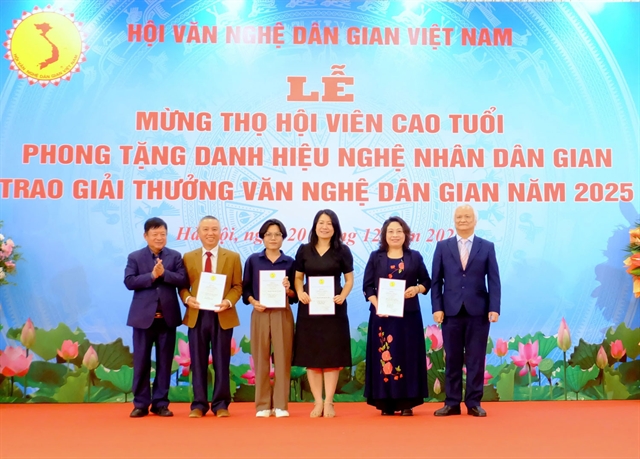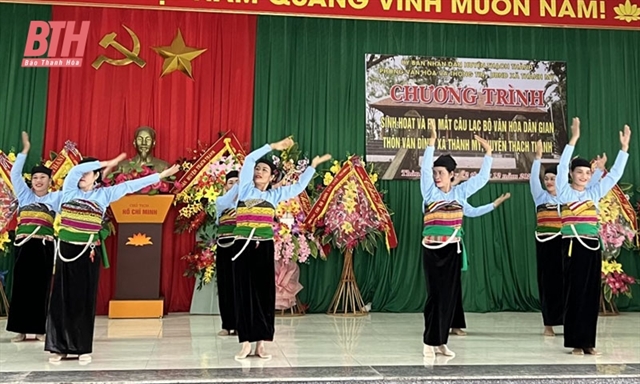 Life & Style
Life & Style
.jpg)
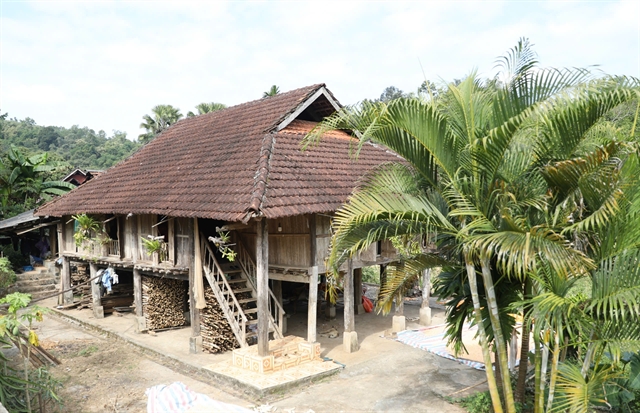 |
| TRADITIONAL ABODE: An old Mường stilt house in Lũy Ải Hamlet. VNS Photo Đoàn Tùng |
By Lương Hương&Trọng Đạt
Nestled in the lush green Mường Bi Valley of Phong Phú Commune, Tân Lạc District in the northern province of Hòa Bình lies Lũy Ải Hamlet—a serene haven preserving the rich cultural heritage of the Mường ethnic minority people.
This picturesque hamlet, some 100km from central Hà Nội, is a treasure trove of traditional stilt houses, unique customs, and cultural practices that have been passed down through generations. Recognised as a representative Mường traditional hamlet by the culture ministry since 2008, Lũy Ải remains a window into the past.
Upon arrival, visitors are greeted by the gentle flow of a crystal-clear stream at the village entrance. Moss-covered stilt houses appear, set against a backdrop of bamboo groves, fruit trees and terraced fields.
At the heart of the hamlet, 34 households live in their traditional wooden stilt houses, designed in the shape of a turtle—a nod to the legendary epic The Birth of Land and Water, which holds great significance in Mường culture.
Visitors can meander along winding paths to soak in the unspoiled beauty, stopping at some houses to learn about the local way of life. Daily activities revolve around farming, fishing, livestock raising, bamboo shoot harvesting, and handloom weaving. Traditional hearths, ethnic clothing, and rustic farm tools are common sights, reflecting the community's connection to its roots.
Cultural heartbeat
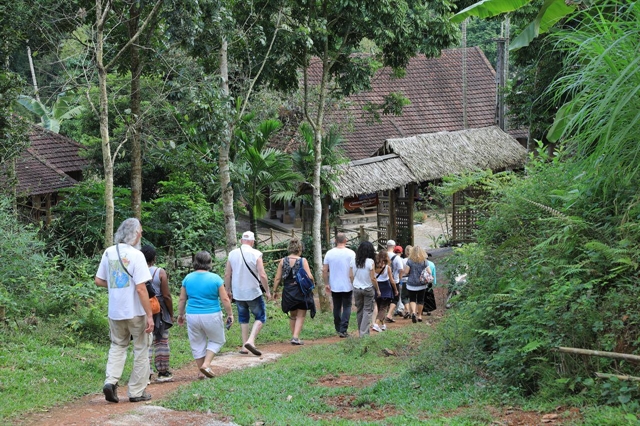 |
| SERENE SPACE: Tourists explore the ancient ethnic hamlet. Photo courtesy of Mường Bi Homestay |
According to Bùi Văn Huynh, the hamlet chief, Mường Bi is the cultural heartland of the Mường people and one of the four most densely Mường populated regions of Hòa Bình, alongside Mường Vang, Mường Thàng and Mường Động.
“This region is considered the homeland of the Mường and a cultural cradle in Việt Nam. Mường Bi culture has long been a benchmark for teaching and preserving ethnic traditions,” Huynh said.
The hamlet's intangible cultural heritage includes Mo Mường rituals, Mường gongs, folk songs, and traditional dances, which remain central to local life. Festivals such as Bumper Crops praying, the Mường Gong festival, and the New Rice festival are celebrated with enthusiasm. Each household preserves at least one or two gongs, ready for festive and cultural events.
“Villagers are deeply committed to preserving their cultural identity and actively contribute to building a vibrant rural community,” Huynh added.
Lũy Ải is leveraging its cultural assets, natural beauty, and warm hospitality to establish itself as a unique community tourism destination.
Home to 207 households and 936 residents—97 per cent of ethnic Mường—the hamlet has earned recognition as a three-star community tourism destination under Hòa Bình’s One Commune, One Product (OCOP) standard.
Lưu Huy Linh, deputy director of the Department of Culture, Sports and Tourism of Hòa Bình, emphasised Lũy Ải’s vital location along key tourism routes in the province.
“Hòa Bình aims to tap into the traditional cultural values of the Mường to create distinctive local tourism products,” Linh said.
Plans include enhancing infrastructure and offering tourism training to locals to boost their hospitality skills.
Currently, three households in Lũy Ải meet the criteria for hosting tourists, offering comfortable accommodations and authentic culinary experiences.
A family affair
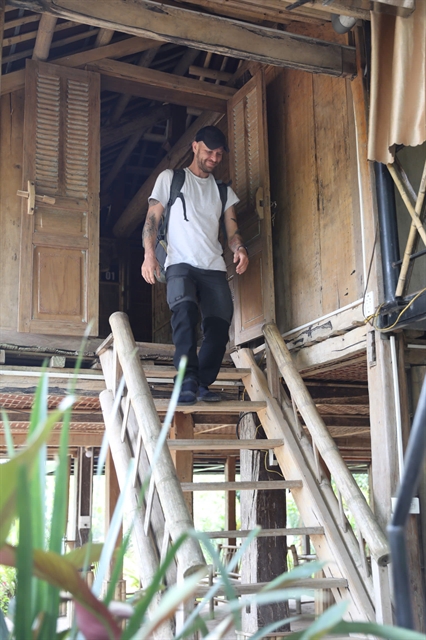 |
| TIME OUT: Pollish traveller Szymon Tront chooses to stop at Lũy Ải Hamlet during his journey around the world. VNS Đoàn Tùng |
Among the pioneers of community tourism in Lũy Ải is the family of Đinh Công Lon, who began offering homestay services in 2015. Lon’s family has renovated their stilt houses while maintaining the cultural integrity of the structures.
“Our family now operates homestay services in two stilt houses, accommodating up to 40 guests. The busiest season is from November to March. We’ve hosted both domestic and international visitors, many of them discover us through platforms like Booking,” Lon told Việt Nam News.
Tourists can immerse themselves in Mường culture by staying in traditional stilt houses, drinking rượu cần (wine drunk out of a big jar through straws), and participating in activities such as farming, cooking, or weaving bamboo crafts with their hosts.
Outdoor enthusiasts can enjoy trekking in the surrounding forests or engaging in folk games, while nearby attractions like Trăng Waterfalls, Bụt Cave, and Ngòi Hoa Bay provide further exploration opportunities.
Polish Szymon Tront, who has travelled to over 70 countries, shared his impressions of Lũy Ải: “I rate it a 10—not for comfort but for the incredible experience. Staying in an authentic Mường stilt house, enjoying local cuisine, and exploring the untouched hamlet without other tourists made for a memorable stay. The family was incredibly friendly and helpful.”
To safeguard the Mường Bi cultural heritage, Tân Lạc District is planning a cultural preservation space tied to tourism.
Lê Chí Huyên, vice chairman of the District People's Committee [Administration] said: “Hòa Bình aims to position Lũy Ải Hamlet as a promising destination with diverse, authentic experiences for tourists. It also serves to alleviate overcrowding at other popular sites like Lác Hamlet in Mai Châu District and Thung Nai in Cao Phong District.”
As Lũy Ải continues to develop its tourism potential, it remains steadfast in preserving the cultural essence of the Mường people. For visitors seeking an authentic cultural experience amid natural landscapes, this ancient hamlet is a destination like no other. VNS
.jpg)


